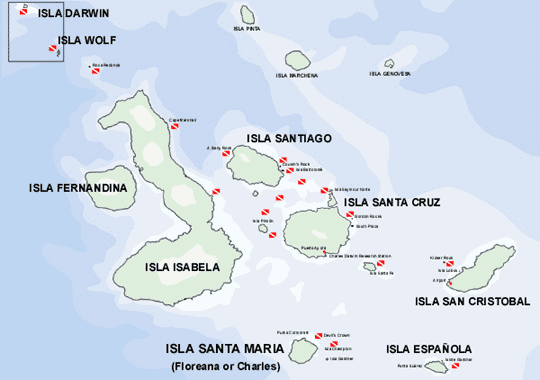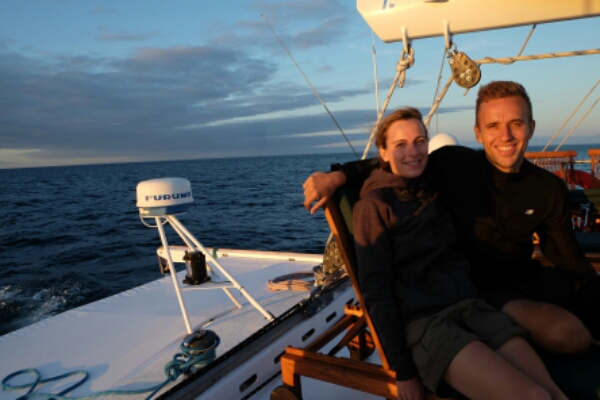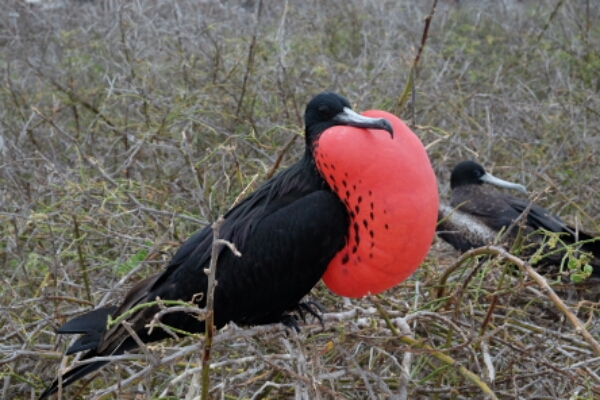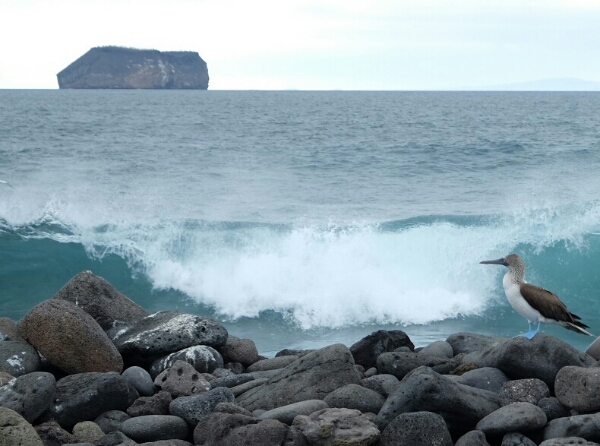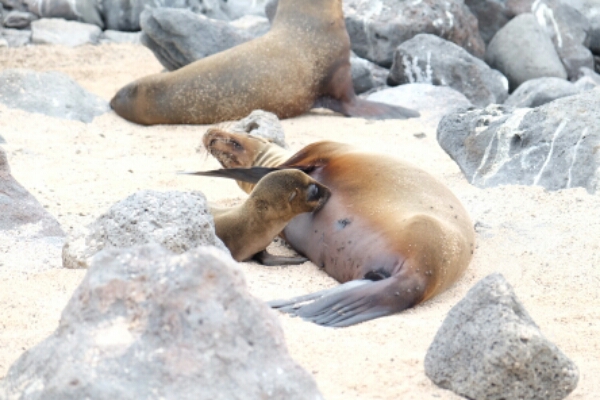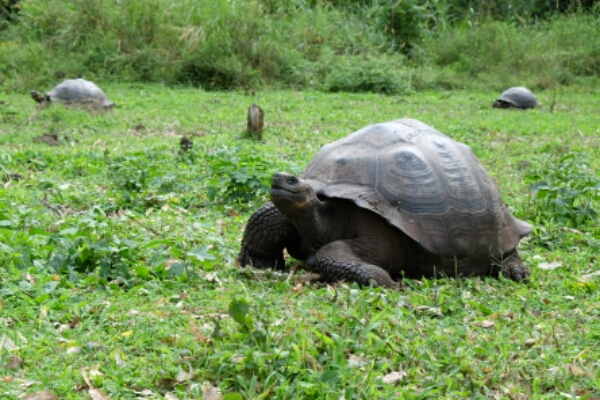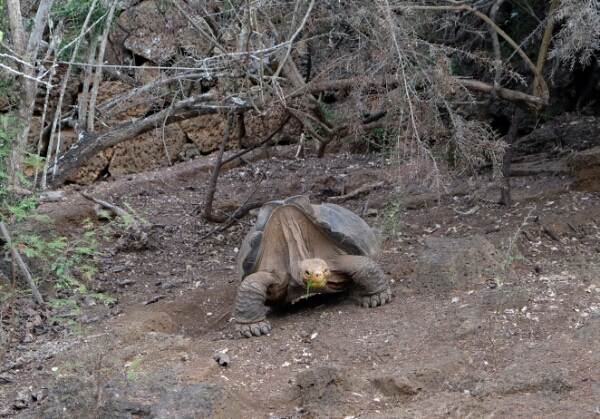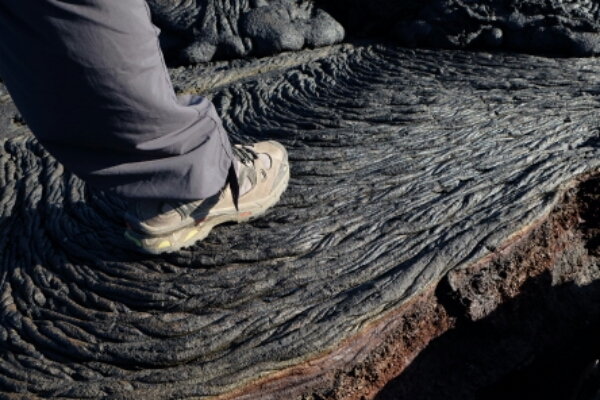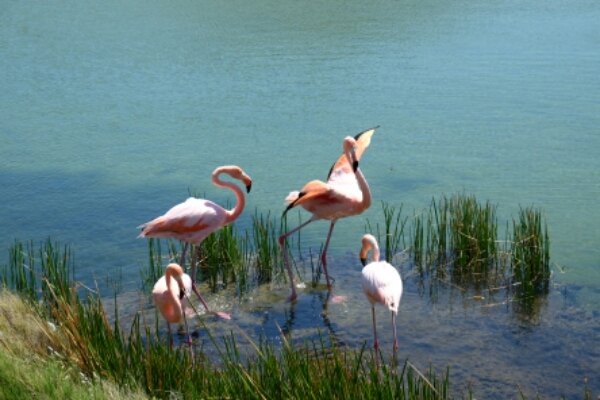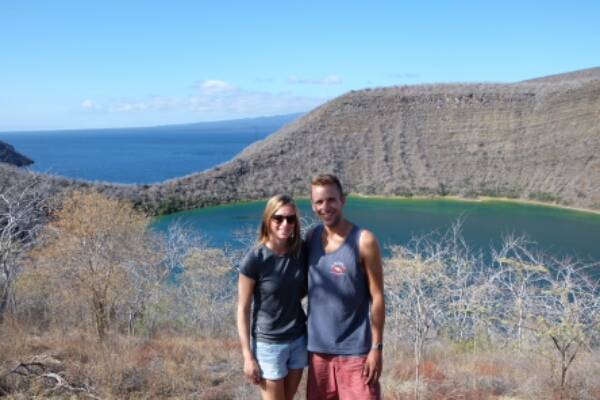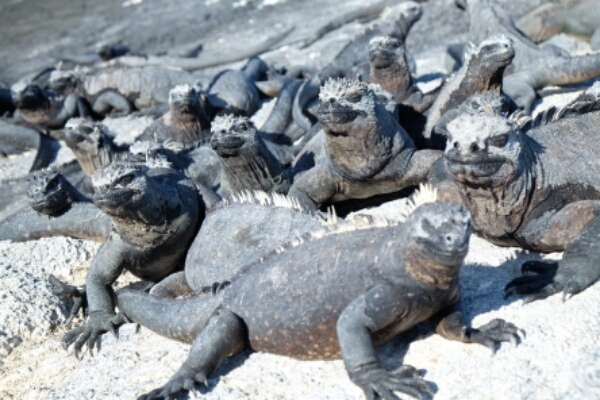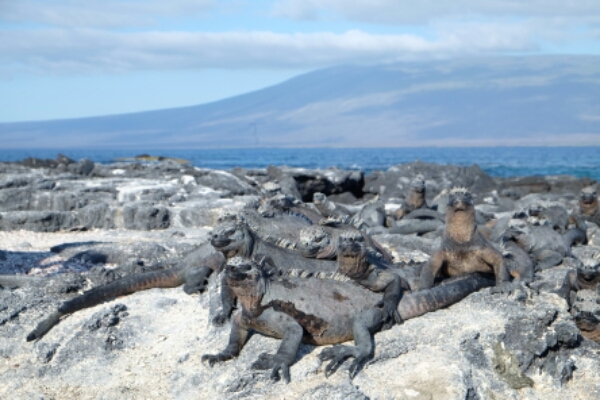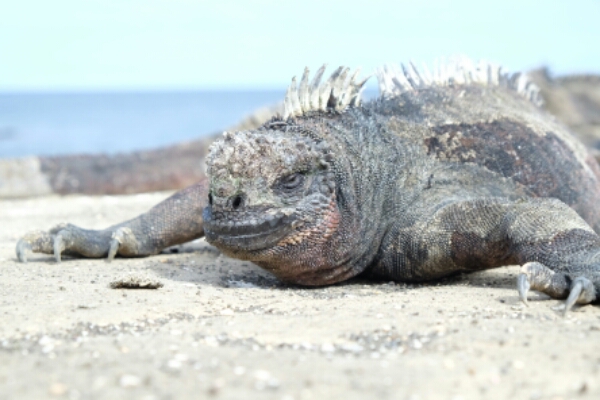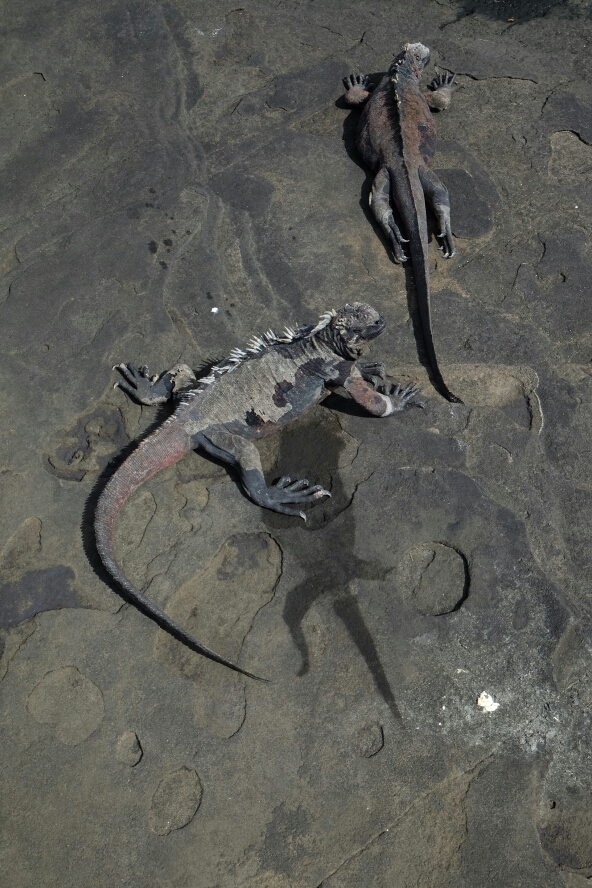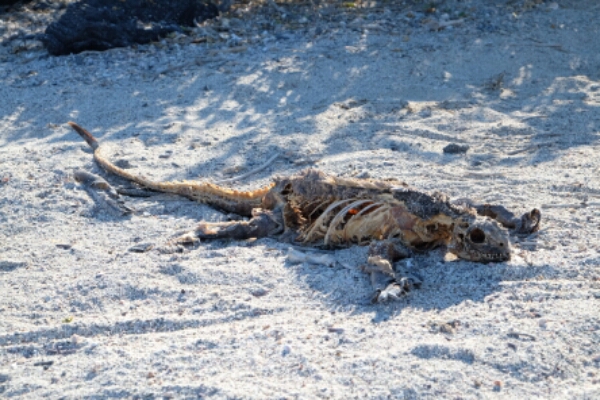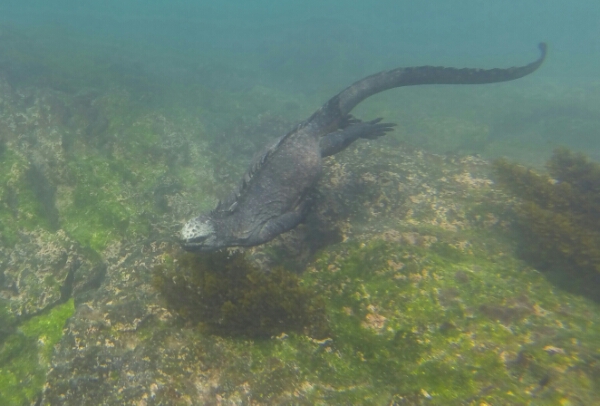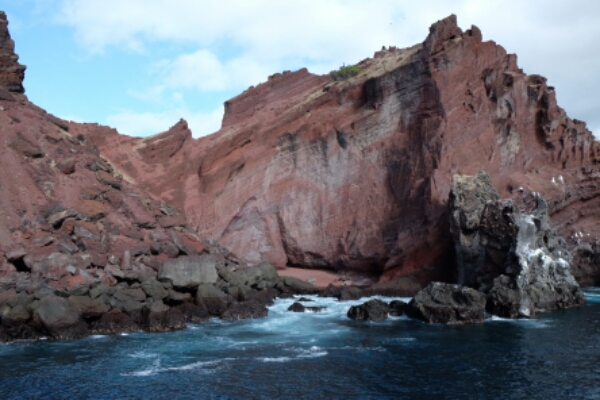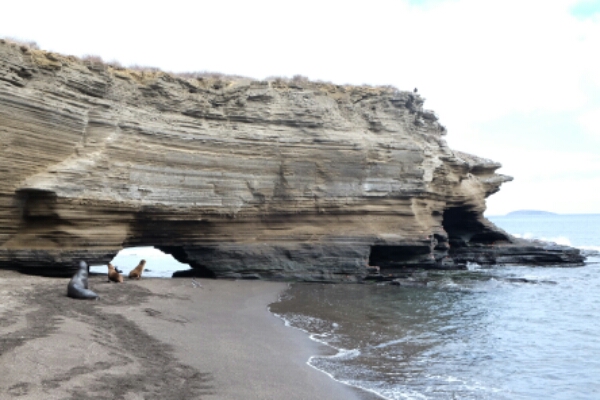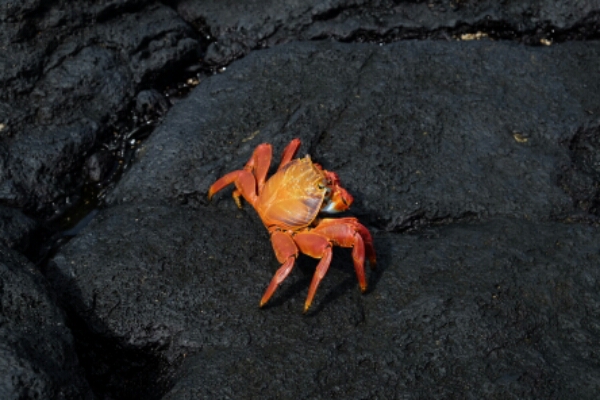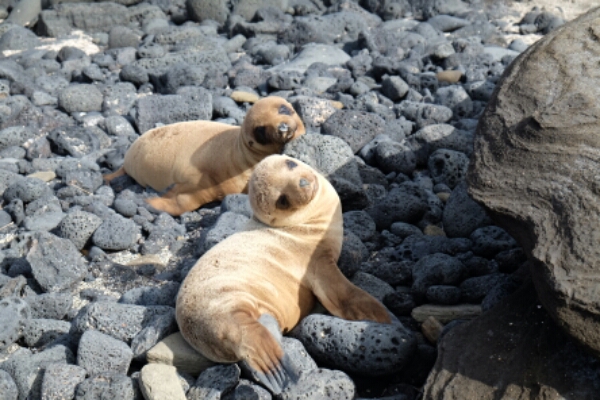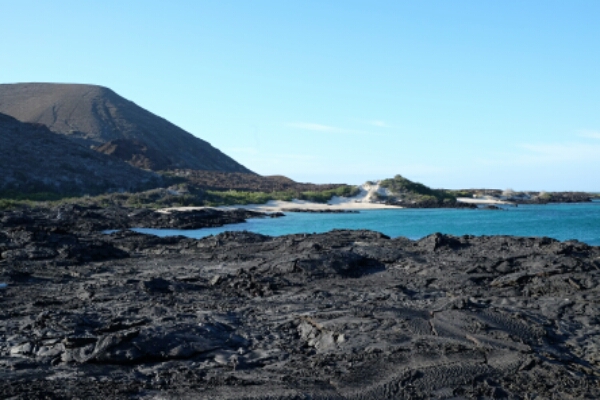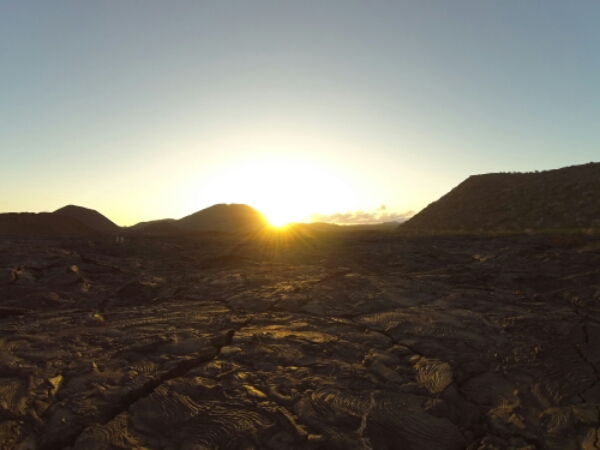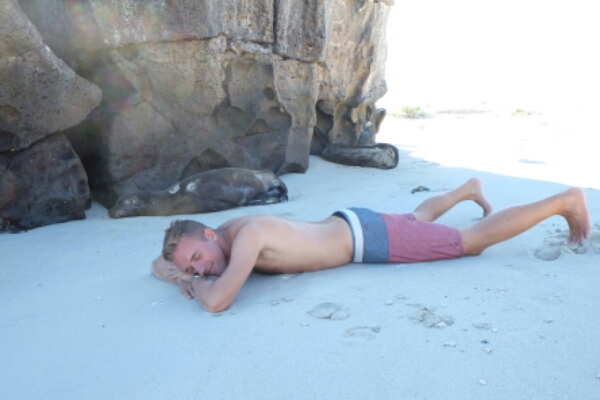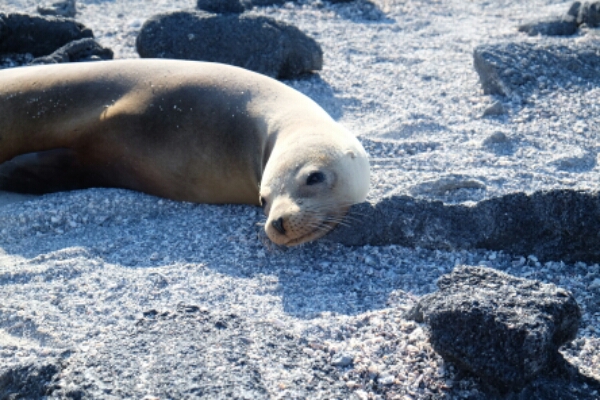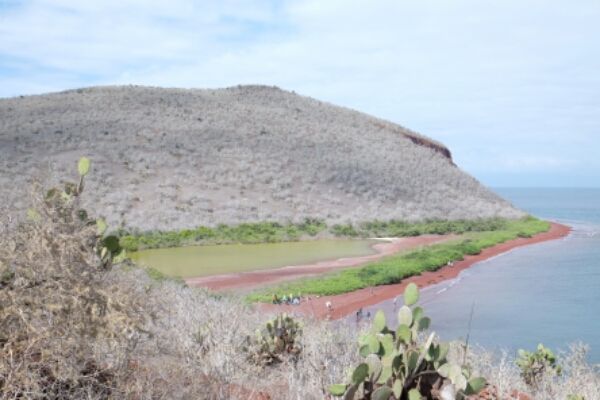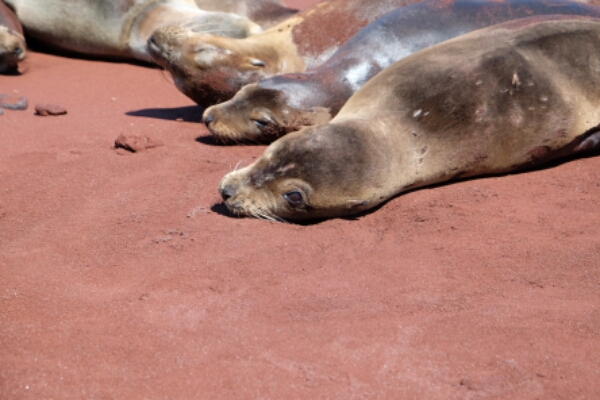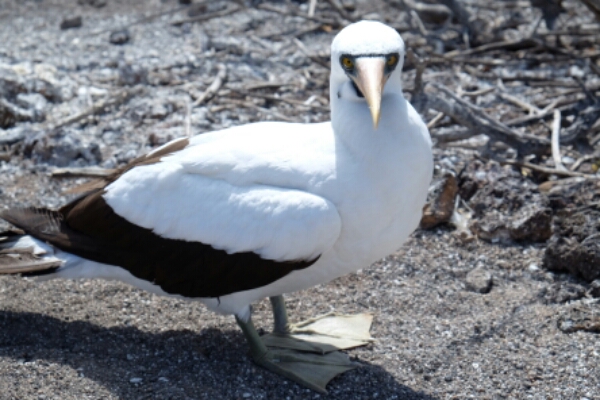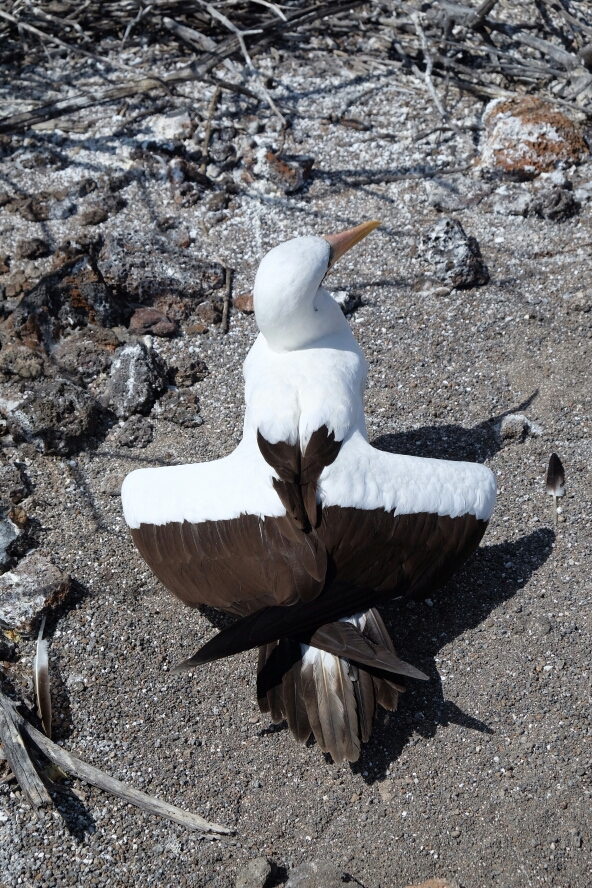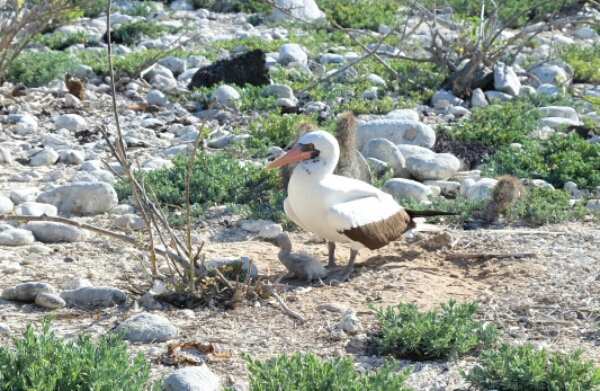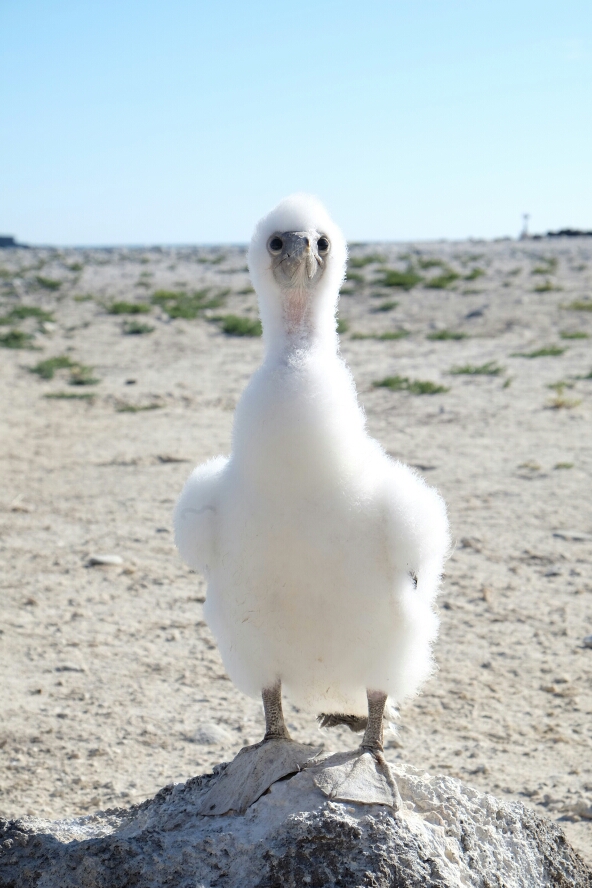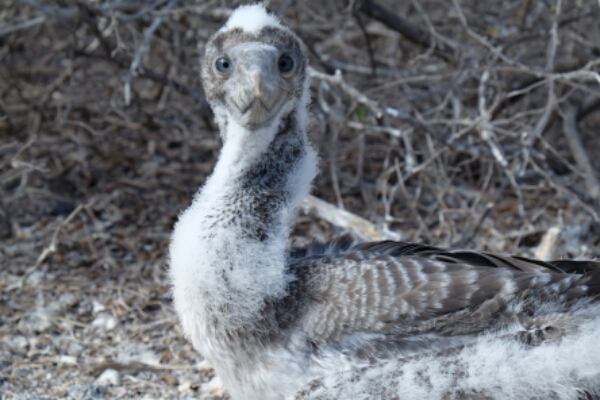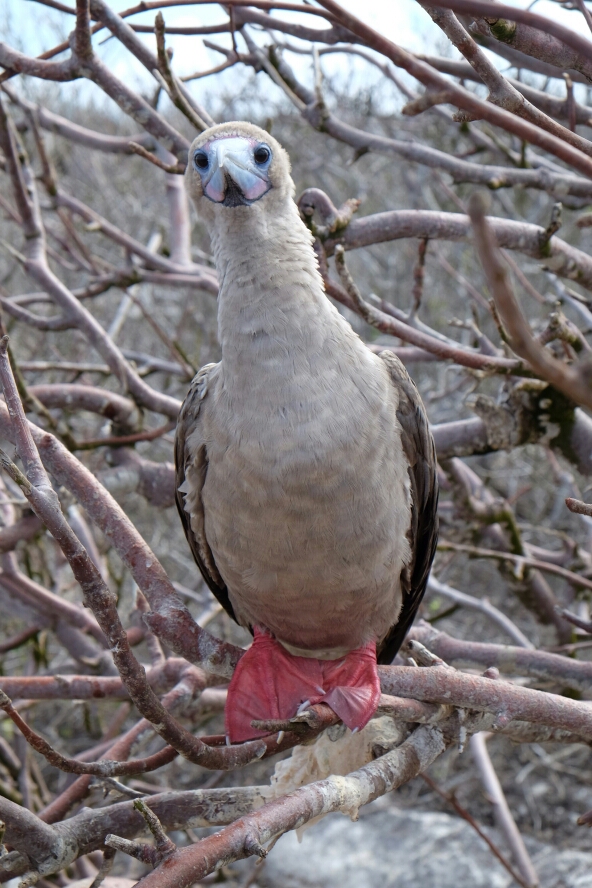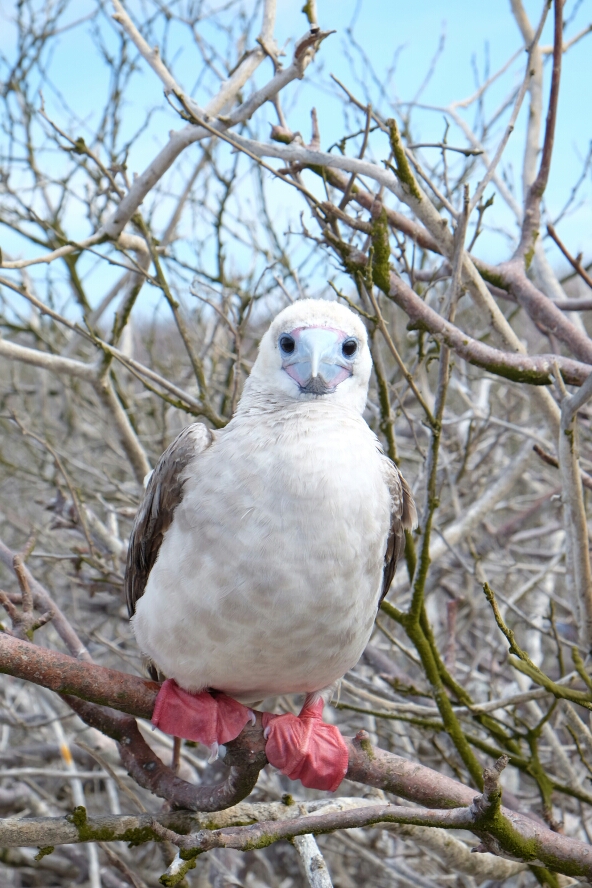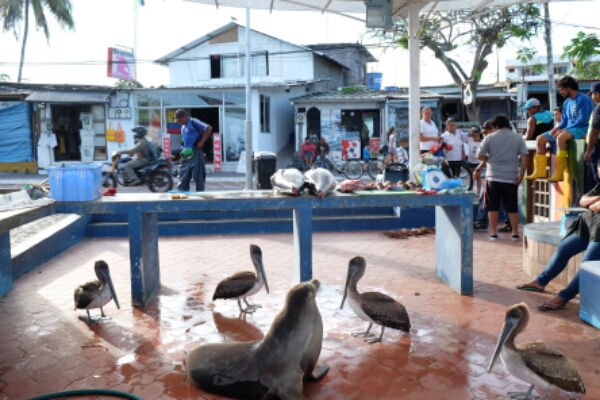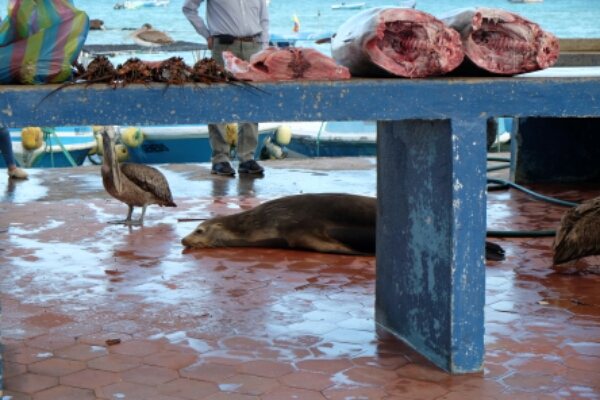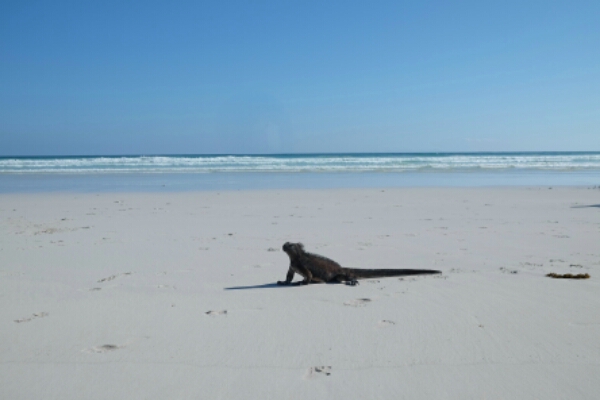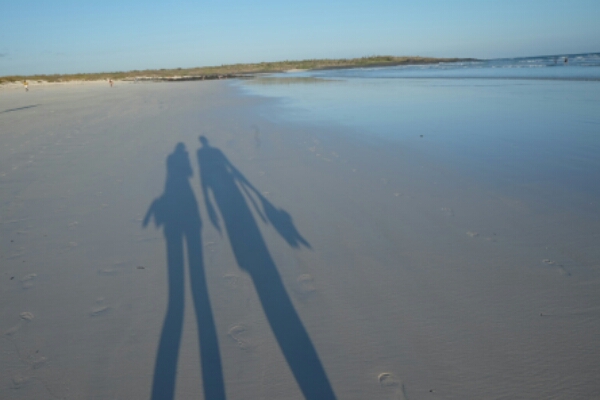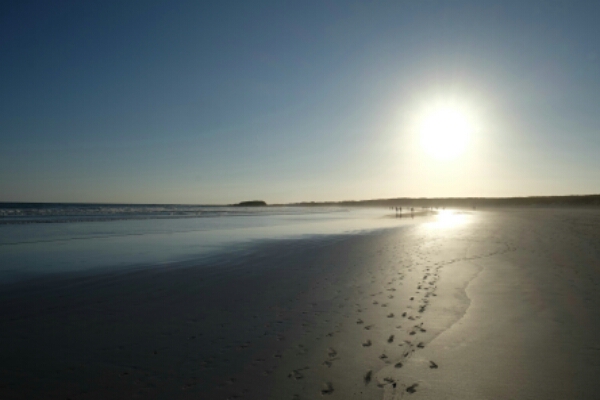Category Archives: Ecuador
Ecuador II – Galápagos
We normally keep a tight ship with the travel budget, but once we got to Ecuador, the proximity to the Galápagos twisted our arms until we said…stuff it, let’s just go! Growing up being enthralled by nature documentaries and basically animals in general, it was a real dream to be able to go and experience it first hand!
The Galápagos are made up of about 13 main islands that sit 1000kms off the coast of Ecuador on top of a three-way tectonic plate junction – hence all the volcanic activity. It’s a crazy place because in the scheme of things, the islands are fairly young, and the animals living there have generally developed apart from human influence or that of any other large land-dwelling predators. As a result, the animals are really not afraid of people and in fact in some places we had to be really careful not to step on sleeping iguanas, birds nests or sea lions!
We really wanted to do a liveaboard dive cruise, but they are ridiculously expensive, so chasing last minute deals from Quito, we settled on a normal non-diving cruise doing the northern route. It is also possible to visit Galápagos via land staying in hostels and getting ferries between the islands, but we wanted to make the most of the time to see as many islands as possible, get to remote spots, and as a plus on the cruise you have a local naturalist guide for the whole trip.
On our first day, we visited North Seymour Island to see the frigate birds, blue-footed boobies, land iguanas and the first of many many sea lions. The frigate birds are pretty cool, not only do the males have crazy red throat sacks for attracting their mates, but they eat fish without ever getting into the water! Basically, they either catch flying fish, or they practice kleptoparasitism…bullying other birds to force them to release or even regurgitate their food – gross! Anyway, the first day was a bit of an overload, animals and photo opportunities everywhere but we were soon convinced that this was only the beginning.
On Santa Cruz Island, the main attraction was the famous Galápagos tortoises. We went out to a farm in the highlands where they are roaming all over the place and in fact the farmers have had to raise the lower rung on their fences to allow the tortoises to pass without wrecking their fences! These guys may be slow, but they’re strong – they can weigh up to 250kg with the shell itself being approx 50kg!
We also visited the Charles Darwin Research Station, which was the previous home to Lonesome George, the last giant Pinta Island tortoise who died at the grand old age of 100 in 2012. Since losing a few of the unique species of tortoises to extinction (they were apparently great for food and lamp oil in the 17th-19th centuries), the research stations breeding programs retreive eggs and raise the little tortoises for 2 – 5 years before releasing them back to their original habitat.
After a rough night of motoring which resulted a lot of dinner being left uneaten (no-one told us it would be soo rough!), we woke up on the west side, by Isabella Island. This was our favourite day of the trip!! In the morning we wandered across harsh, dry lava fields with a small brackish lagoon in the middle. You wouldn’t think anything would be able to live there, but there’s a family of elegant pink flamingoes.
Then in our first snorkelling session at Urbina Bay we saw an amazing variety of interesting creatures! To start with the sea lions are like dogs with their huge inquisitive eyes are playful nature, we could have spent hours blowing bubbles and playing with them, but there was more to see. Galapagos Penguins, zoomed by us while fishing, turtles cruised by at a much more relaxed pace and the Flightless Cormorants swam around underwater chasing small fish and checking under ledges for octopus.
The highlight of Fernandina Island were the marine iguanas. In response to the harsh, dry conditions on the island, these guys evolved from the land iguana to swim and eat marine algae. However because their bodies still can’t handle ingesting such large quantities of salt, they spend their days basking in the sun and spitting it out their nostrils. Imagine the show with more than 20 iguanas per square metre.
On the following days, we visited Santiago and Rábida Islands taking in more and more diverse landscapes and animals, including visits from whales and dolphins while on our way there.
The most striking feature of Isla Rábida is the red sand beach which is a result of the high iron content of the lava there. There were also plenty of sea lions lolling on the beach or wanting to play fetch with sticks in the water. While snorkelling there we also saw our first shark, a Galápagos Shark, which a sea lion proceeded to chase away so it could stay the centre of attention.
.
For the last island visit of the cruise we were taken north (another whole night of motoring) to Genovesa Island to see the Nazca Boobies, Red-footed Boobies and Tropic birds. Due to the lack of land based predators on the island, the birds nest on the ground or on low bushes. The mother birds were mostly all out fishing leaving the fluffy white babies behind to fend for themselves. Sadly, we saw a couple of cases where the mother didn’t come back, and they died of starvation waiting. However, most of the little ones were really inquisitive, staring at us with their beady eyes hoping we might deliver them some sort of fishy meal.
After an amazing seven days on the seas, we were dropped back at the airport with wobbly legs. We made our way to Puerto Ayora on the south of Santa Cruz where we had organised an airbnb stay and a few scuba dives. With an afternoon to kill before the dives the following day, we walked out on a trail through national park to Tortuga Bay, and unexpectedly came across the prettiest beach of the trip so far! It had beautiful flour like white sand, turquoise water and for Galápagos novelty effect, marine iguanas strolling along the beach and swimming in the waves.
Five ocean currents converge at the Galápagos islands. The Equatorial, Cromwell, Humboldt, and Panama currents create variable water temperatures and unpredictable tides in the area resulting in a unique marine life. What really attracted us was a chance to dive with some big creatures, especially hammerhead sharks and it didn’t disappoint.
After a 2.5hr boat ride to Floreana Island, complete with people spewing over the side, we were treated to banks of endemic black striped salema (they surround you like a funnel), schools of barracuda, whitetip reef sharks, sealions, seahorses and nudibranchs. The current was so strong it was like diving on fast forward when going with it, a real workout swimming into it or like being in a washing machine when we held onto a rock for a rest or to get a better look at something.
Gordon Rocks is one of the famed dive sites for spotting hammerheads and a school of about 25 were roaming about when we were there. Luckily, thanks to the abundance of food in the Galápagos, they just swam right by us totally uninterested. They weren’t as big as we had imagined them, between 2.5 to 3 metres, but they’re the smallest out of the 5 different hammerhead species. Still, we will always treasure the few minutes we were hovering among them, staring at their routine laps around Gordon Rocks.
While in some parts of Galápagos we found the walking paths and allowed areas on the islands a bit restrictive, when you realise it’s for the protection of the animals, their eggs or nesting areas it makes sense. I think the best way to describe the experience of visiting Galápagos is that it’s like being on the inside of a zoo! It was a dream come true and definitely worth the extra expense. We’d go back to do the South route in an instant, but for now it’s back to budget and onwards to Perú!
Love Xavi & Sal
Ecuador I – The Mainland
We loved Colombia but man, how nice was it to get back to a country with shorter bus rides! So after a painless border crossing and just about a couple of hours south, Mike, Ana, Sal & I reached our first destination in Ecuador: Otavalo.
Otavalo is a charming, ideal-size town, big enough to resupply toiletries and small enough to walk across it in less than half an hour. Otavalo is also home to the indigenous group of the kichwas, famous for their commercial and textile abilities.

The main highlight in town is its artisanal market in Plaza de los Ponchos, the biggest of its kind in South America. Vendors from the entire region gather in a huge plaza to sell all sorts of weavings, wooden carvings, jewellery,… it’s a paradise for hippies! We actually loved the hammocks (bargain for $15), but we had to leave them behind…as we’ve had to do with many souvenirs from other countries…to keep the backpack weight under control.

However, I couldn’t say no to an Andean beanie ($3) that has been keeping me warm at altitude since! What I needed the most though, a pair of casual shoes to change into after wearing stinky hiking boots all day, proved impossible to find. A normal size like 12/EUR 46 has no place in Central and most of South America (maybe size 10/43 if lucky)… and get ready to be laughed at if you ask for it. Do you need the shoes for a clown costume, sir?

To finish off with the markets, we had most of our meals in the food markets. Ecuadorian’s national dish, laquingacho, is a combination of fried mash potato balls, mote (corn), avocado, chorizo or beef and a fried egg on top. Simple yet delicious!
I also made some friends improvising a basketball game with a paperball and my t-shirt neck as a hoop… hours of fun!

The day after we put on our cold-night-aired hiking boots and headed to the Cuicocha crater lake for a beautiful 4 hour hike around it. The beanie came handy as we started to explore the Cordillera de los Andes!

Colectivos take you to the start of the walk and we were told that there would be many ready to pick us up afterwards. After the 4 hour walk and starving, there wasn’t a single soul at the parking lot…until a Canadian journalist, his Ecuadorian guide and driver came out of nowhere and offered us a ride to the bus stop. We’ll be thankful for eternity, what a nice group of guys and what an awesome job he had!
Quito, the capital, was our next stop. The free walking tour is a must, as well as paying a couple of bucks to get to the top of the Basílica. It has amazing views of the busy city and thrilling ladders over gargoyles in the shape of all the fauna from Galápagos. Interestingly enough, there are several unfinished decorations on the facade. The reason for them is pure superstition, as there was a volcano eruption when they were about to finish this masterpiece, so they never dared to complete it.
Another church, San Francisco, makes it to the list of highlights in town… it’s a real shame that Spaniards had to build them directly above the indigenous cult buildings…
For an evening treat, we headed to La Ronda, the former red light district is now converted into a beautiful pedestrian street with little bars offering local specialties and live music.

A few kilometers north from Quito you can reach “La Mitad del Mundo” (The Middle of the World), a cool monument surrounded by tourist shops that is suppossed to be in latitude 0° 0′ 0”. Apparently they screwed up with the coordinates and the real middle of the world is a few kilometers in another direction…but hey, why spoil a story with the facts!
The 4 of us couldn’t believe our eyes when, waiting for our turn to take the pictures, a man started carving jamón ibérico right in front of us. The guy was launching a range of spanish cured meats in Ecuador…so Ana and I quickly became interested in the story…and the ham. Big
mistake from my side: don’t offer to take pictures when there’s jamón in between. I missed most of the slices to my fellow travellers.

Another relatively short bus (4hrs this time) took us to Latacunga, our starting point for the Quilotoa loop. This loop takes 3 days of hiking to complete and the beauty of it is that you spend every night in a different remote andean town.
The scenery was great too, from local markets, to more crater lakes, river crossings, valleys, lookouts,…you basically ascend and descend a different valley every day.

We were also adopted by a dog on our last day, we kept each other’s company, runs and laughs for 3 hours or so, until we reached the next town, territory of some nasty dogs that scared our friend away.

Sigchos, the town at the end of the walk had some local delicacies being barbequed in the main plaza. We couldn’t say no for $0.20!
Back to Latacunga and after a recovery night, we took another bus to Baños, a touristy town for gringos and locals alike, surrounded by active volcanoes and famous for its sugar cane candy, waterfalls and hot springs = baños, rich in all sorts of minerals.

The sugar cane candy is hooked around this wooden stick several times to stretch it and cool it down

The hotsprings are located right next to a waterfall, so you can jump between 40C° to 15C°…and quickly back to 40 :)
After this deserved treatment, we rented mountain bikes for the next day, so we could cover the 50 odd kilometers of La Ruta de las Cascadas (The Waterfall Route). The mountain bikes aren’t necessary, any plain city bike would do the job as most of the way is downhill on a paved bike lane…however, I’m sure they rent more bikes this way. The disappointment in terms of the biking challenge was offset by the fury of some of the waterfalls and the great spots to swim. After that, no one in their sane mind would pedal 50kms uphill, so we paid a couple of bucks for a ride back home.
While soccer is supposed to be the national sport, the only game we saw people play in almost every town was volleyball! Around 6pm, nets are set and teams of 3 challenge each other. Competitiveness is high, although it’s more about laughing at the other team’s mistakes.
 We were lucky to be in Ecuador in October, as they celebrate lots of local fiestas. Apart from fireworks and a minimum of 2 processions per day, we witnessed some local games held at the market while we were having lunch. The 2 games that got the crowd roaring were the watermelon and cucumber races. Both disciplines were quite sexist, the first involved the local women pushing a watermelon for a lap around the market with a broom; and the latter was a relay of running holding a cucumber between the thighs.
We were lucky to be in Ecuador in October, as they celebrate lots of local fiestas. Apart from fireworks and a minimum of 2 processions per day, we witnessed some local games held at the market while we were having lunch. The 2 games that got the crowd roaring were the watermelon and cucumber races. Both disciplines were quite sexist, the first involved the local women pushing a watermelon for a lap around the market with a broom; and the latter was a relay of running holding a cucumber between the thighs.
In the meantime, pork crackling and chicha were being served up to the locals.

The hotsprings and the waterfalls are the main inexpensive attractions but, if you’re into extreme sports, Baños is a great spot for rafting, paragliding, bungee, etc. We didn’t sign up for any of them because we were keeping the budget under control after taking the leap and deciding to visit the Galápagos, which we will cover on the next post, don’t miss it!
Love, Sal & Xavi

